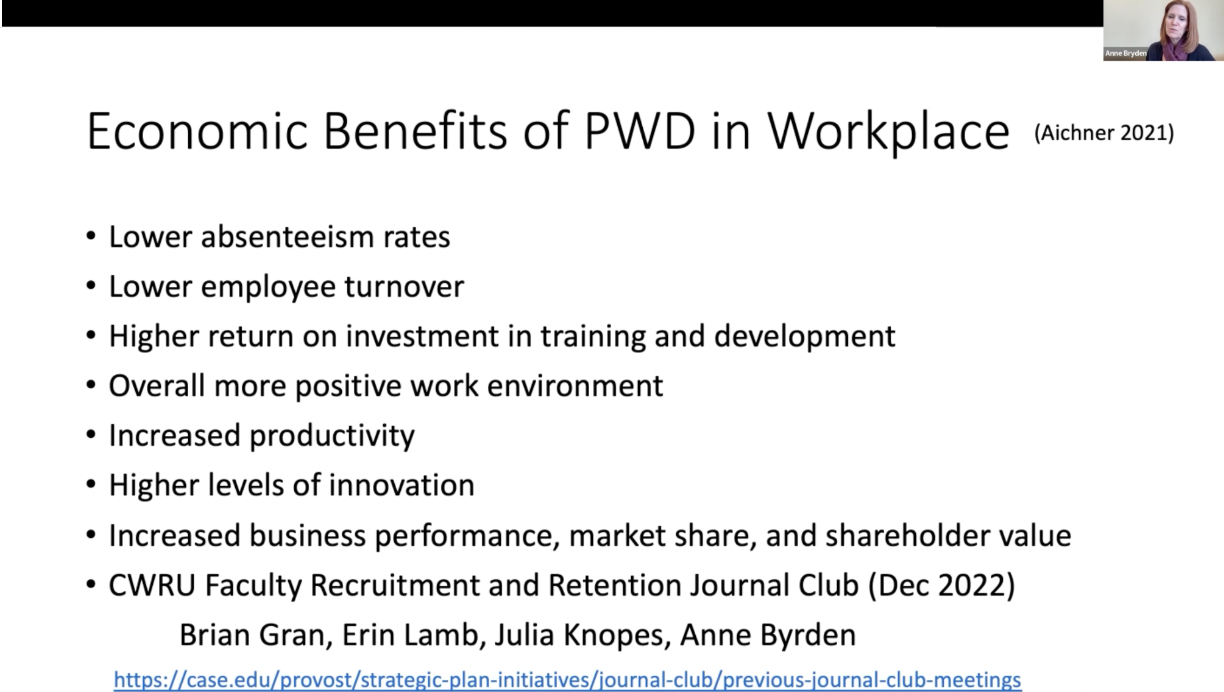Disability is Reported to Be One Underexplored Facet of Diversity
The Americans with Disabilities Act defines disability as “physical or mental impairment that substantially limits one or more major life activities.” According to the Centers for Disease Control and Prevention, 26% or 1 in 4 adults in the United States have some type of disability. 13.7% have a functional disability that impacts mobility.
Cheryl Dudek, Director of Operations for the Cleveland Functional Electrical Stimulation (Cleveland FES) Center shared that the Cleveland FES Center has been around for more than 30 years and is a research consortium funded by the Office of Research and Development in Washington D.C. The Cleveland FES Center’s research focuses on electrical currents to stimulate muscles or block pain throughout the body. “No longer are we just a hand grasp system. We’ve actually taken the system and we treat weak muscles [...],” Dudek explained.
Drs. Anne Bryden and Kimberly Anderson-Erisman are Cleveland FES investigators.
Drs. Bryden and Anderson used a participant, partner, and personnel framework to discuss physical disabilities. Dr. Bryden shared that people with disabilities are largely absent from mainstream health research, limiting the application of research findings for a significant population. She explained and recommended accessible research design under a universal design framework (Rios et al. 2016). Dr. Bryden added that additional ways to contribute to accessible research design include accommodations and modifications. When asked why many people with disabilities are excluded from research Dr. Bryden explained, “There is a common misconception that if you have a disability, you’re not healthy.”
Dr. Anderson has a spinal cord injury and knows how to advocate to partner with people in research from a collaborator and participant point of view. She proposed a model about how to engage people with lived experience in spinal cord injury research that she explains in the talk. “Our overarching goal is, ‘How do we meaningfully engage with individuals with spinal cord injury in our research so that we can prevent tokenism from happening?’” Dr. Anderson said. She added that there is discussion to get a formal designation of individuals with disabilities as experiencing health disparities to promote more research.
Dr. Anderson served as a member of the Subgroup on Individuals with Disabilities that was charged with developing a report with suggestions for how the National Institutes of Health could bolster efforts to support the inclusion of people with disabilities in the scientific workforce. Read the report in full.
View the roundtable talk on our YouTube channel.



